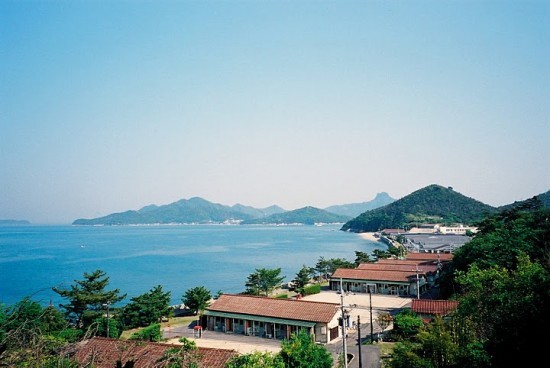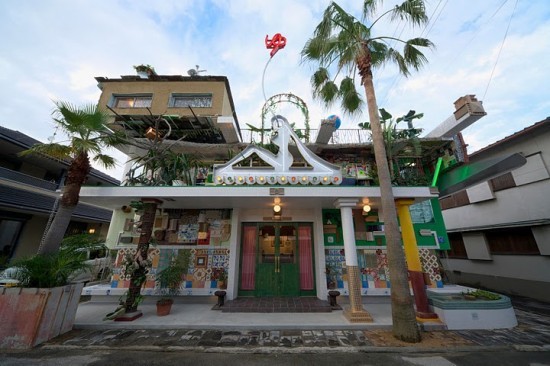To Whom Does Art Belong?
On the forced resignation of Fram Kitagawa (Part II)
In Part I of this two-part essay on the current conditions for exhibiting contemporary art in Japan, Noi Sawaragi reviewed the historical relationship between fine art and industrio-political promotion in the Meiji-era modernization process, exemplified by the first Bunten (Ministry of Education Art Exhibition) in 1907.
Under the administrative division that characterizes Japanese ministries and agencies in which education, culture and science are rendered exclusively independent of each other, it was entirely predictable that once this sphere came under the control of the Ministry of Education, things like market principles and commercial incentives would be eliminated from the administration of culture. What is problematic about this situation is that when a culture determines its own values instead of referring to things like market principles and commercial indices, ultimately the only foundation it has is “authority.” Accordingly, those involved in art administration ever since the Bunten (Ministry of Education Art Exhibition) have had to continually pretend that they themselves are the authority in order to guarantee their own legitimacy (by claiming, for example, “The reason this work has authority is because I, the person who sings its praises, am an authority.”) Incidentally, as Alexandre Kojève points out, legislative power and authority are clearly different. On account of its direct engagement with the real world, the former involves a bitter struggle for power and for this reason the principle of competition involving a third party in the form of interests comes into play. On the other hand, because it involves consent between two parties rather than struggle, authority can be sufficiently amassed by refraining as much as possible from making authoritative statements and simply acting authoritatively (in short, by throwing one’s weight around). In other words, even though the rituality of consent based on the master-slave relationship is the source of legal power, unless this contradiction is sublated and finds general acceptance, it does not become socialized. Imitating the asocial rituality of this consent on the part of the state, the Bunten interceded in the group power struggle between Japanese- and Western-style painting, for which there was no prospect of a resolution, by establishing a prize system within the consenting body in the form of the state, and in so doing ultimately establishing their own “authority.” This clearly demonstrates the true nature of the baseless authority associated with the judging, awarding of prizes and other ritualistic actions carried out by the Ministry of Education, Culture, Sports, Science and Technology, the Agency for Cultural Affairs and the other organs of the state that are involved in culture to this day. The legitimacy of those involved is assured not through debate based on assertion and argument, but simply through consensual procedures surrounding who occupies the chair of privilege. Far from fulfilling the three principles of Modernism (democracy, technological innovation, a market economy), this situation is nothing but the vestige of a pre-modern feudal system.

View of the Seto Inland Sea island of Oshima, one of the sites for the Setouchi International Art Festival 2010
As such, perhaps now is a good time to return to the dawn of modernity and reconsider from a broader perspective what kind of art would be appropriate to modernization in Japan by looking at alternatives to the authoritarianism of the post-Bunten era. For example, the permanent exhibition at the National Museum of Modern Art, Tokyo, which one would expect to be an “authority” on the subject of Modern art in Japan, begins its account of Japanese Modern art in 1907 when the Bunten was established (the first section is entitled “Around the Launch of the Bunten”). Absent from this are the industrial promotion-like technological innovations and industrial exhibition-related tourist products and commercial aspects of Japanese Modern art that accompanied its dawning. It’s as if this absence is an echoing of some distant revenge drama in response to the actions of Toshimichi Okubo, who, following his appointment to the position of Minister of Home Affairs upon his return from the Iwakura Mission, issued the Proposal for Industrial Promotion and shifted this responsibility along with the name “National Industrial Exhibition” to the Ministry of Home Affairs.
In an interview posted on the blog Tokyo Geijustushi, Kitagawa alluded to this history when he said, “In effect, what I’ve done strategically up till now is cultivate the art market via the Ministry of Land, Infrastructure and Transport route instead of the Ministry of Education, Culture, Sports, Science and Technology route,” in response to which the blogger noted, “What is meant by the Ministry of Education, Culture, Sports, Science and Technology route is probably ‘tourism.'” Kitagawa seems to suggest that art administration for a new era can be possible only when it expands into the spheres of a wide range of ministries and agencies, including the Ministry of Land, Infrastructure and Transport, the Ministry of Agriculture, Forestry and Fisheries (which has jurisdiction over the fields, mountains, rivers and seashore), and the Ministry of Economy, Trade and Industry, based on a perspective that considers carefully the need for cooperation with the “new industrial promotion” in areas such as tourism and business as opposed to the specialization in ritualistic art administration that has occurred since Bunten. Given the current climate in which everyone seems to be advocating the decentralization of power, the disclosure of information and real democracy, it is difficult to interpret this as a particularly reckless idea. Above all, given that it has emerged in a field like contemporary art whose development has been driven by things like the diversity of opportunity and the expansion of modes of expression, it is in a sense natural that places like mountains, rivers, oceans and farmland that exist outside Bunten-like cultural devices such as public art institutions will be increasingly considered in the future as platforms for expression, and industrial exhibitions (fairs) increasingly considered as places of business.

Shinro Ohtake – Naoshima Bath “I❤湯” (2009). Photo Osamu Watanabe.
When we look at it this way, an even larger issue arises in the form of how we should redress Modern or post-Bunten art. As well, one potentially visionary and effective project that could serve as a draft plan indicating the direction art in this country should head is this July’s inaugural Setouchi International Art Festival 2010, an initiative linked to tourism involving various islands in the Seto Inland Sea, and which Kitagawa, as director, has been working on throughout his involvement in the similarly formatted Echigo-Tsumari Art Triennial. (Incidentally, the ministries and agencies supporting this art festival are the Ministry of Internal Affairs and Communications, the Ministry of Economy, Trade and Industry, the Ministry of Land, Infrastructure and Transport and the Japan Tourism Agency.) Even though the events leading up to the forced resignation of Kitagawa that I touched on at the beginning of my last column arose from the somewhat hasty introduction into the art museum – the bastion of art administration since the Bunten era – of the industrial promotion-like approach to art favored by the old Ministry of Home Affairs, such initiatives should probably be allowed to proceed, albeit modified through a process of trial and error. (As mentioned in subsequent coverage in the Mainichi Shimbun, on the subject of the events surrounding the Niigata City Art Museum, a third-party committee has pointed to questionable practices involving the storage and lending and borrowing of artworks stemming back to the opening of the museum in 1985, before Kitagawa took charge.)
However, to repeat what I wrote at the beginning of my last column, in a sense what I fear most is a situation in which the managerial and administrative problems that already existed at the museum will be unduly drawn into the problems arising from the theme itself set by Kitagawa of “water and earth,” resulting in the suppression of new possibilities for artistic expression and of the artists pursuing these possibilities. After all, in the US, ever since the appearance of Robert Smithson in the late 1960s, there has been a shift in artistic expression so that it not only places the highest value on preserving artwork for later generations, but has also come to accept artwork being intentionally exposed to the effects of time outside art museums. However, although it is often misunderstood, the appearance in the West of Land Art and Earthworks has led to more than just the use of earth as a material for large-scale, outdoors artworks. Precisely because artworks have a finite existence outdoors, documentation takes on meaning beyond that of secondary material, and attention is focused on new projects separate from the collection, preservation and management of works in art museums, as well as on a reconsideration of the permanency of artworks. At the same time, Smithson brought actual sand and rocks into art museums and linked these materials with the world (ie, site) outside the art museum (ie, non-site) using photographs and maps, and in so doing showed the inside of art museums in a critically relativised form. For this very reason, if the events at the Niigata City Art Museum are exploited by certain sections of “authority” in an unduly instructive manner, and the situation with regard to the exhibition environment in Japanese art museums returns to what was “common practice” before Robert Smithson, not only could we say (after the title of a recent exhibition by the artist collective Chim↑Pom) that “Japanese Art is 10 Years Behind,” but the situation will inevitably regress a full 40 years or more, with the scars of the conflicts among the various ministries and agencies going back to the Meiji period still remaining.
All images courtesy Setouchi International Art Festival
